As the world grapples with an increasing number of natural disasters, humanitarian crises, and large-scale infrastructure projects, the demand for flexible, rapidly deployable, and cost-effective housing solutions has become more critical than ever. Traditional approaches to temporary and transitional shelter often fall short in meeting the complex and evolving needs of displaced populations, migrant workers, and other transient communities, leaving them vulnerable and underserved.
In response to this pressing challenge, a new and innovative approach to temporary housing has emerged: the concept of “Container Labor Camps.” By repurposing standard shipping containers as the foundation for modular, self-contained living spaces, this revolutionary housing solution is reshaping the way we address the temporary accommodation needs of a wide range of populations.
“The container labor camp model represents a fundamental shift in the way we think about temporary housing,” explains the lead project manager at a prominent container housing development firm. “By leveraging the inherent strengths and versatility of shipping containers, we’re able to create highly functional, adaptable, and cost-effective living spaces that can be rapidly deployed to meet the unique needs of displaced individuals, migrant workers, and other transient communities.”
At the core of the container labor camp concept is the recognition that traditional temporary housing solutions, such as tents or prefabricated structures, often fail to provide the level of durability, privacy, and amenities that are essential for the well-being and productivity of their occupants. In contrast, the container labor camp model harnesses the robust and modular nature of shipping containers to deliver a more comprehensive and sustainable approach to temporary accommodation.
“Shipping containers offer a unique set of attributes that make them an ideal foundation for temporary housing,” the lead project manager explains. “Their sturdy steel construction, standardized dimensions, and ease of transportation and assembly allow us to create living spaces that are not only highly durable and resilient but also incredibly versatile and responsive to the diverse needs of the communities we serve.”
By leveraging these inherent strengths of shipping containers, the container labor camp model has emerged as a compelling solution for a wide range of temporary housing scenarios, from disaster relief efforts and migrant worker accommodations to remote construction site housing and even military encampments.
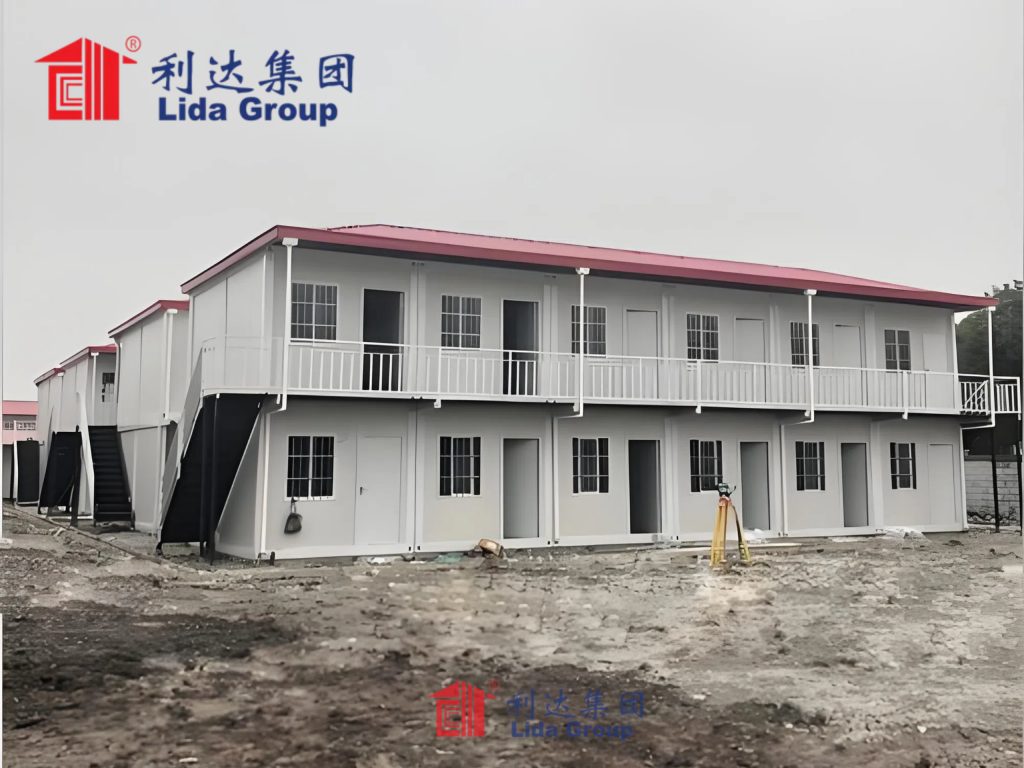
Adaptability and Scalability: The Hallmarks of Container Labor Camps
One of the key advantages of the container labor camp model is its exceptional level of adaptability and scalability, which allows these innovative housing solutions to be tailored to the unique requirements of various temporary housing scenarios.
“The modular and configurable nature of container-based living spaces is truly transformative, as it enables us to rapidly deploy and reconfigure these temporary housing solutions to meet the evolving needs of our target populations,” the lead project manager explains. “Whether it’s adapting the layout and amenities to accommodate the specific requirements of migrant workers on a construction site or quickly scaling up the size and capacity of a container labor camp to support disaster relief efforts, the inherent flexibility of this approach is truly unparalleled in the temporary housing market.”
At the heart of this adaptability is the container labor camp’s modular design, which allows for the seamless integration and reconfiguration of individual container units to create a wide range of living space configurations and community layouts.
“By designing our container labor camps to be easily connectable and reconfigurable, we’re able to rapidly assemble and deploy temporary housing communities that can accommodate the diverse and evolving needs of their occupants,” the lead project manager explains. “Whether it’s expanding the living space to provide additional bedrooms for growing families or reconfiguring the layout to create dedicated communal areas, the modular nature of our container-based solutions allows for a high degree of customization and responsiveness that simply can’t be matched by traditional temporary shelter options.”
This modular, scalable approach to temporary housing also enables the container labor camp developers to efficiently scale their solutions to meet the demands of large-scale emergency situations, infrastructure projects, and other scenarios that require the rapid deployment of temporary accommodation.
“In the wake of major disasters or the launch of large-scale construction initiatives that require the mobilization of thousands of workers, the ability to rapidly deploy and scale up temporary housing solutions is absolutely critical,” the lead project manager explains. “By leveraging the inherent modularity and transportability of shipping containers, we’re able to quickly assemble container labor camp communities that can provide stable, resilient, and well-equipped shelter for displaced populations or migrant workers, even in the most challenging and resource-constrained environments.”
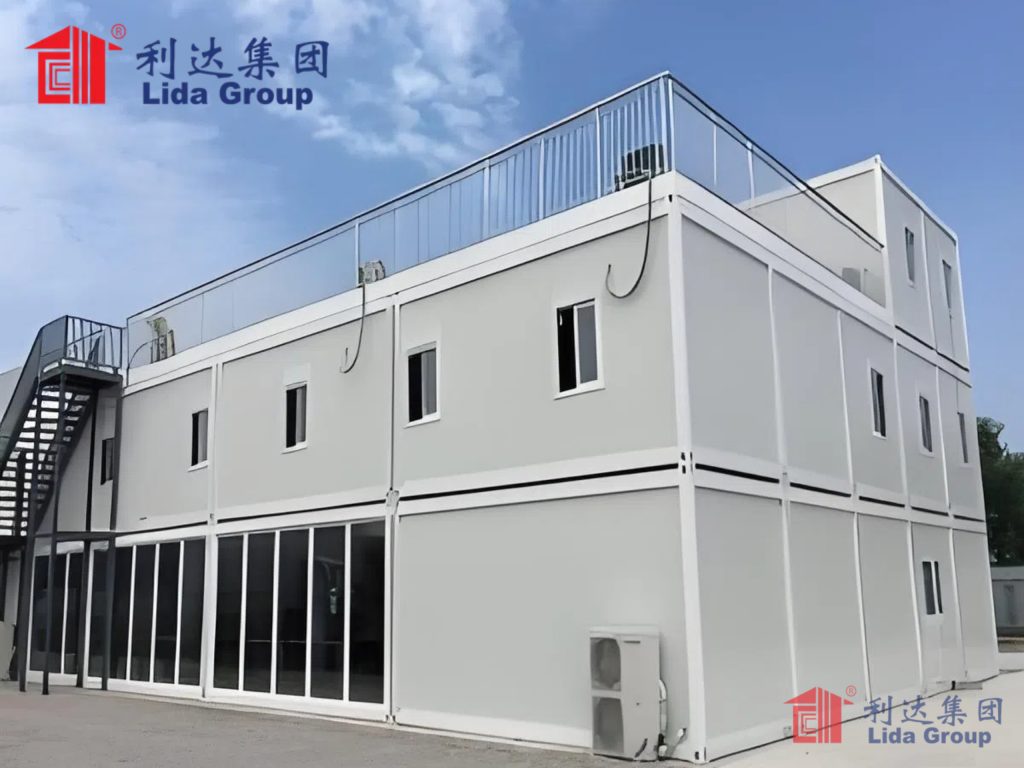
Enhancing Sustainability and Self-Sufficiency
In addition to their exceptional levels of adaptability and scalability, the container labor camp model is also designed with a strong emphasis on sustainability, environmental responsibility, and long-term self-sufficiency – attributes that are particularly valuable in the context of temporary housing scenarios.
“Sustainability and self-reliance are core principles that are deeply embedded in the design and engineering of our container labor camp solutions, reflecting the recognition that temporary housing must not only meet the immediate needs of its occupants but also contribute to their long-term well-being and resilience,” explains the lead sustainability and systems integration expert.
One of the key ways in which container labor camps advance the sustainability and self-sufficiency of temporary housing is through their extensive integration of renewable energy and advanced water management systems.
“Each of our container units is engineered to be fully self-sufficient in terms of its energy and water needs, with comprehensive solar power systems, battery storage, and advanced water recycling and treatment capabilities,” the lead sustainability and systems integration expert explains. “By empowering the occupants of our container labor camps to generate, store, and manage their own essential resources, we’re able to create temporary living spaces that are not only more resilient and responsive to changing conditions but also better aligned with the long-term goal of fostering self-reliance and reducing dependence on external infrastructure or support.”
The container labor camp developers have also placed a strong emphasis on the incorporation of high-efficiency building materials, passive climate control strategies, and other sustainable design features that can further enhance the environmental performance and long-term durability of these temporary living spaces.
“Through the strategic use of insulation, natural ventilation, and other energy-saving technologies, we’re able to dramatically reduce the energy demands of our container-based living spaces, ensuring that their occupants can maintain comfortable indoor environments with minimal impact on the surrounding environment,” the lead sustainability and systems integration expert explains. “Additionally, the inherent durability and longevity of our container-based designs mean that these housing solutions can be deployed, reused, and even relocated over an extended period of time, further enhancing their sustainability and reducing the overall resource consumption associated with temporary shelter.”
By seamlessly integrating these cutting-edge sustainability and self-sufficiency features into the container labor camp design, the developers have created temporary housing solutions that not only meet the immediate shelter needs of their target populations but also serve as a platform for long-term resilience, empowerment, and community development.
“Our container labor camps are engineered to be more than just temporary shelter – they’re designed to be fully functional, self-sustaining living spaces that can foster a greater sense of independence, security, and long-term well-being among their occupants,” the lead sustainability and systems integration expert explains. “By equipping these container-based homes with advanced renewable energy, water management, and other sustainable systems, we’re able to empower the individuals and communities we serve to take an active role in managing their own essential resources and meeting their core needs, ultimately enhancing their ability to weather the challenges of temporary housing and transition towards more permanent, self-sufficient living arrangements.”
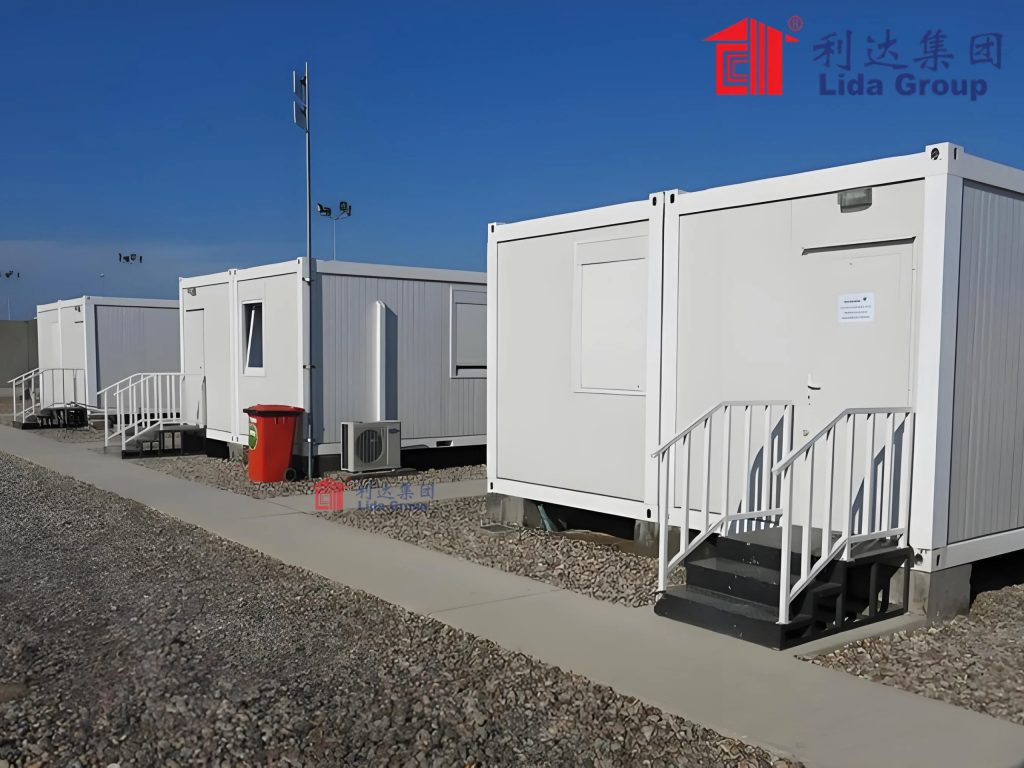
Prioritizing the Health, Safety, and Comfort of Occupants
While the container labor camp model’s emphasis on adaptability, scalability, sustainability, and self-sufficiency are undoubtedly crucial attributes, the developers’ unwavering commitment to the health, safety, and overall well-being of their target populations is perhaps the most transformative aspect of this innovative temporary housing solution.
“At the heart of our container labor camp design is a deep understanding of the unique needs, challenges, and priorities of the individuals and communities we serve, whether they are displaced by natural disasters, engaged in large-scale infrastructure projects, or facing other forms of temporary housing scenarios,” explains the lead occupant experience and human-centered design expert. “By placing the well-being and long-term flourishing of our occupants at the center of our development process, we’re able to create temporary living spaces that not only meet their practical shelter requirements but also contribute to their physical, mental, and emotional well-being in meaningful and lasting ways.”
One of the key ways in which the container labor camp model addresses the health and safety needs of its occupants is through the incorporation of robust structural and safety features that can withstand the rigors of temporary housing scenarios.
“The container-based design of our temporary living spaces provides an exceptional level of structural integrity and durability, ensuring that these container labor camps can effectively protect their occupants from the elements, environmental hazards, and other potential threats that are often present in emergency and transitional shelter settings,” the lead occupant experience and human-centered design expert explains. “From reinforced steel framing and impact-resistant materials to integrated fire suppression systems and advanced security features, our container labor camp solutions are engineered to deliver a level of physical safety and security that is simply unmatched by traditional tent-based or improvised shelter options.”
Beyond the core structural and safety attributes of the container labor camps, the developers have also prioritized the integration of design elements and features that can positively impact the mental, emotional, and social well-being of their occupants.
“We recognize that the psychological and social dimensions of temporary housing are just as critical as the physical shelter requirements, as the upheaval and uncertainty associated with displacement or transient living situations can have a profoundly detrimental impact on the overall well-being and resilience of the affected populations,” the lead occupant experience and human-centered design expert explains. “By incorporating thoughtful design elements, such as access to natural light, strategic use of color and materials, and the integration of biophilic features, we’re able to create container labor camp living spaces that can help to alleviate stress, improve mood, and foster a greater sense of comfort and psychological restoration.”
Additionally, the container labor camp model is engineered to facilitate social interaction and community building, with flexible shared spaces, communal gardens, and other features that encourage occupants to come together, forge meaningful connections, and collectively navigate the challenges of their temporary living situation.
“The social dimension of temporary housing is absolutely critical, as the ability to maintain a sense of community and social support can be a vital source of resilience and empowerment for the individuals and communities we serve,” the lead occupant experience and human-centered design expert explains. “By designing our container labor camps to foster social engagement and collaboration, we’re able to create temporary living environments that can help to mitigate the sense of isolation and disconnection that often accompanies displacement or transient living, ultimately contributing to the long-term well-being and self-sufficiency of our occupants.”
Furthermore, the container labor camp solutions incorporate a range of advanced technological features and integrated systems that can enhance the overall comfort, convenience, and self-reliance of their occupants, further strengthening their ability to weather the challenges of temporary housing.
“Through the integration of cutting-edge building management systems, smart home technologies, and intuitive digital interfaces, we’re able to empower the occupants of our container labor camps to actively monitor, control, and optimize the performance of their living spaces,” the lead occupant experience and human-centered design expert explains. “Whether it’s adjusting the temperature and ventilation, managing energy and water consumption, or accessing critical information and support resources, these advanced technological features provide our occupants with a greater sense of control, independence, and overall well-being in the face of their temporary housing situation.”
By prioritizing the health, safety, and overall well-being of their target populations throughout the design and development of their container labor camp solutions, the developers have created temporary housing that not only meets the practical shelter needs of those facing displacement or transient living but also serves as a platform for long-term resilience, empowerment, and community-building.
“Our container labor camps aren’t just about providing a roof over someone’s head – they’re about creating living environments that can truly transform the lives of the individuals and communities we serve, equipping them with the resources, support, and sense of autonomy they need to weather the challenges of temporary housing and transition towards more stable, self-sufficient living arrangements,” the lead occupant experience and human-centered design expert explains. “By seamlessly integrating cutting-edge design, technology, and sustainability features into our container-based solutions, we’re able to deliver a level of occupant well-being and quality of life that is simply unmatched in the temporary housing market.”
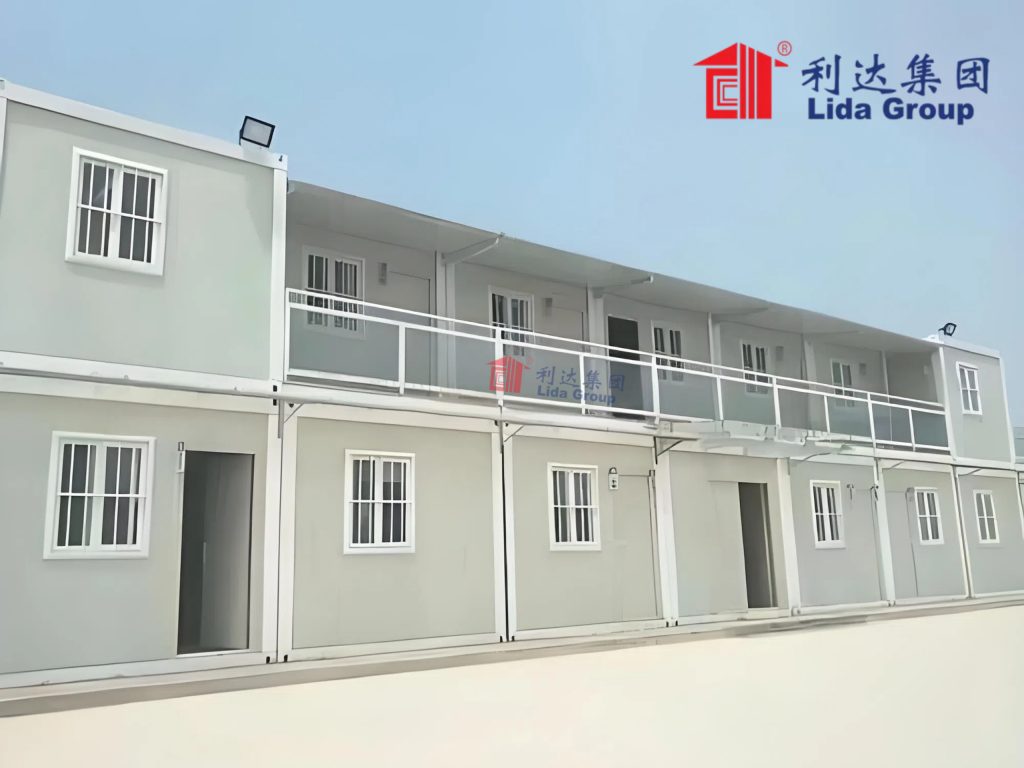
Addressing the Logistical and Regulatory Challenges of Deployment
While the container labor camp model offers a compelling and innovative solution to the pressing challenges of temporary housing, the developers have also had to navigate a complex web of logistical and regulatory hurdles in order to successfully deploy these modular, container-based living spaces in a wide range of global contexts.
“Deploying temporary housing solutions in the aftermath of disasters, for large-scale infrastructure projects, or in other scenarios that require the rapid mobilization of transient populations requires a high degree of logistical expertise and coordination, as the unique constraints and demands of these environments can present a range of practical challenges that must be carefully addressed,” explains the lead logistics and operations expert.
One of the key logistical considerations for container labor camp deployments is the need for efficient and reliable transportation solutions that can quickly and safely deliver the modular container units to their designated deployment sites.
“In the context of temporary housing scenarios, speed and responsiveness are of the utmost importance, as displaced individuals, migrant workers, or other transient populations often require immediate access to stable, secure, and well-equipped living spaces,” the lead logistics and operations expert explains. “To meet this critical need, we’ve developed a comprehensive transportation and logistics strategy that leverages specialized equipment, strategic route planning, and highly trained logistics teams to ensure the timely and seamless delivery of our container labor camp solutions to areas in need.”
This logistical expertise extends beyond the initial transportation and delivery of the container units, with the developers also carefully managing the on-site installation, configuration, and ongoing maintenance of their temporary housing solutions.
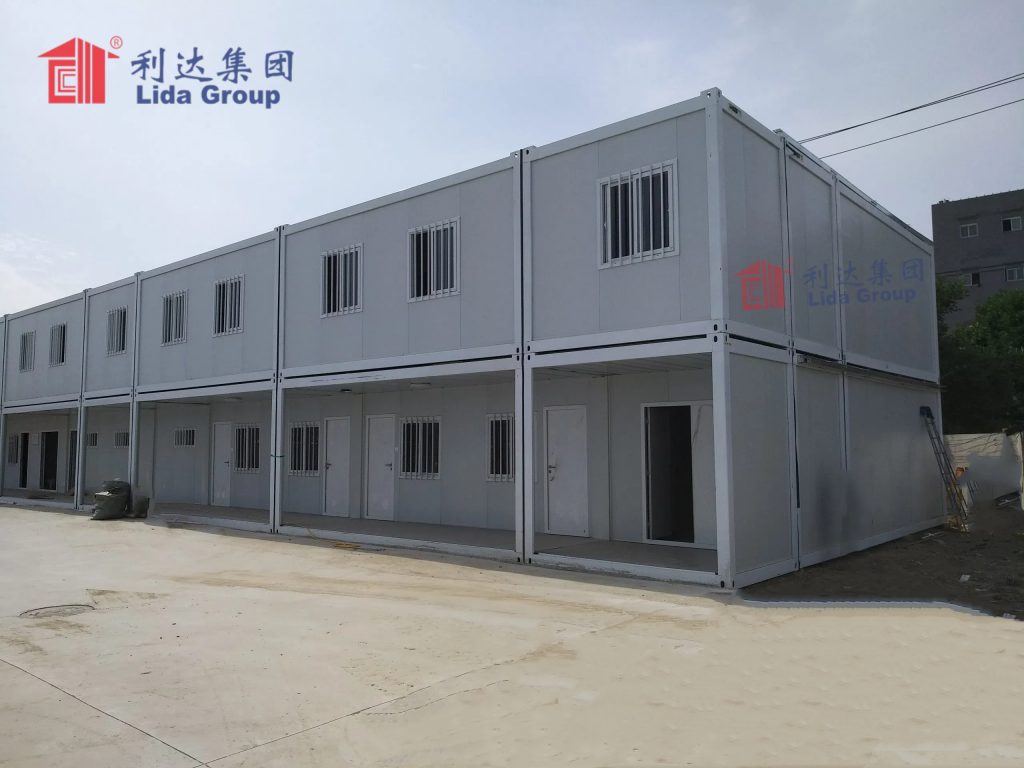
“Deploying and setting up our container labor camps in the middle of a disaster zone, a remote construction site, or a resource-constrained refugee camp requires a level of operational sophistication and coordination that goes well beyond the typical construction project,” the lead logistics and operations expert explains. “By leveraging specialized installation crews, pre-fabricated components, and highly efficient on-site workflows, we’re able to rapidly assemble and configure our container-based living spaces, ensuring that the individuals and communities we serve can quickly access the shelter, resources, and support they so desperately need.”
In addition to the logistical challenges of deployment, the container labor camp developers have also had to navigate a complex web of regulatory and compliance requirements that can vary significantly across different global contexts.
“The regulatory landscape for temporary housing solutions is constantly evolving, with a diverse array of local, national, and international standards and codes that must be carefully navigated to ensure the safety, legality, and overall viability of our container labor camp deployments,” explains the lead regulatory and compliance expert.
To address these regulatory hurdles, the container labor camp developers have invested heavily in the development of robust compliance and certification programs, leveraging a team of experienced legal and technical experts to help guide their projects through the complex bureaucratic requirements.
“By proactively engaging with local authorities, humanitarian agencies, and other key stakeholders, we’ve been able to develop a deep understanding of the specific regulatory requirements that apply to temporary housing solutions in different regions and contexts,” the lead regulatory and compliance expert explains. “This collaborative approach has not only helped to streamline the approval and permitting process for our container labor camp deployments but has also enabled us to build strong, productive relationships with the decision-makers and influencers who play a critical role in shaping the future of emergency and transitional shelter solutions around the world.”
The container labor camp developers’ commitment to regulatory compliance and logistical excellence has not only facilitated the successful implementation of their temporary housing solutions in a wide range of scenarios but has also helped to build trust and credibility with governments, humanitarian organizations, and local communities.
“By demonstrating our ability to navigate the complex web of logistical and regulatory challenges that come with deploying innovative temporary housing solutions in crisis-affected regions or large-scale infrastructure projects, we’ve been able to position our container labor camp model as a trusted and reliable partner in the temporary accommodation space,” the lead regulatory and compliance expert explains.
“This level of trust and credibility is essential to our long-term success, as it allows us to work collaboratively with key stakeholders to shape the future of temporary housing, ensuring that our container labor camp solutions are fully integrated into the comprehensive disaster response, workforce mobilization, and humanitarian aid strategies of governments, NGOs, and other global organizations.”
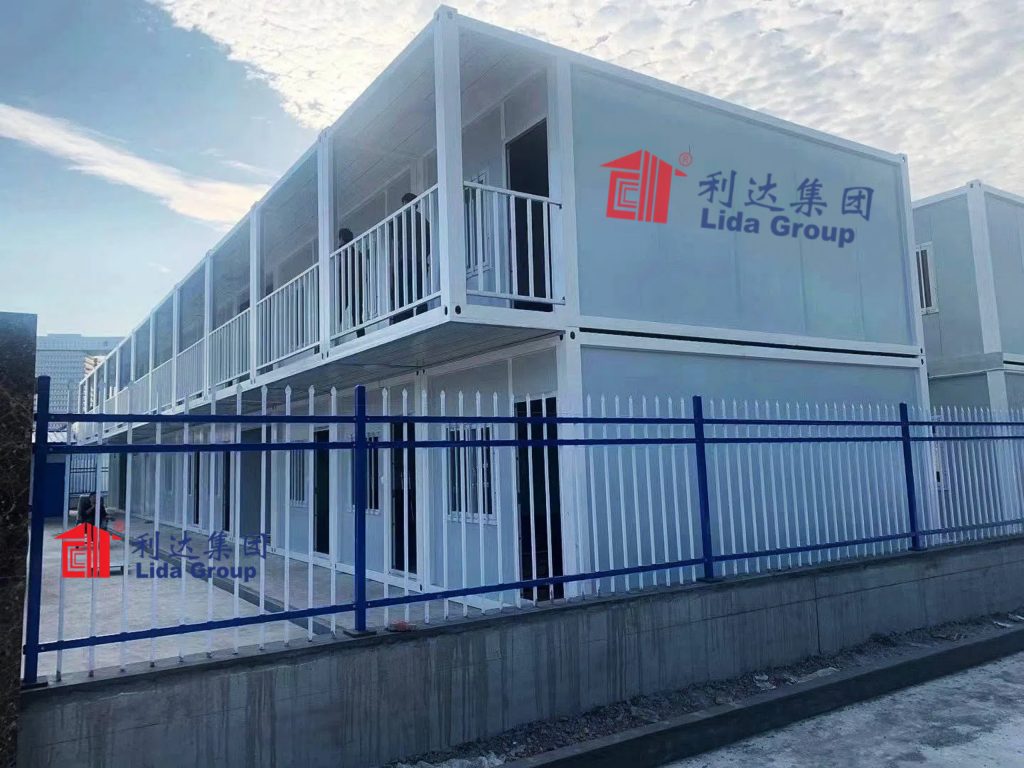
Conclusion
As the world continues to grapple with an increasing frequency and severity of natural disasters, humanitarian crises, and large-scale infrastructure projects, the demand for versatile, resilient, and responsive temporary housing solutions has become a critical global priority. In this rapidly evolving landscape, the container labor camp model has emerged as a transformative and innovative solution that is redefining the standards of emergency, transitional, and workforce accommodation.
By leveraging the inherent strengths and versatility of repurposed shipping containers, the container labor camp developers have created a modular, self-contained living space that can be quickly and efficiently deployed to meet the diverse and evolving needs of displaced populations, migrant workers, and other transient communities. With a strong emphasis on sustainability, self-sufficiency, and occupant well-being, these container-based temporary housing solutions not only provide stable and resilient shelter but also serve as a platform for long-term empowerment and community development.
Through their unwavering commitment to addressing the logistical, regulatory, and humanitarian challenges that often plague traditional temporary housing solutions, the container labor camp developers have positioned themselves as global leaders in the field of modular, container-based temporary accommodation. By working collaboratively with governments, humanitarian organizations, and private sector partners, the company has been able to successfully implement their innovative container-based living spaces in a wide range of crisis-affected regions and large-scale infrastructure projects, delivering a level of functionality, responsiveness, and occupant well-being that is truly unmatched in the temporary housing market.
As the world continues to face the daunting challenges of displacement, workforce mobilization, and disaster response, the container labor camp model stands as a shining example of how innovative, sustainable, and people-centric temporary housing solutions can serve as a powerful tool for promoting resilience, empowerment, and long-term community development. By continuing to push the boundaries of what is possible in the realm of modular, container-based living, the developers of these transformative temporary housing solutions are paving the way for a future in which no one is left without access to the stable, secure, and well-equipped shelter they so desperately need.

Related news
-
Detachable Temporary Homes Offer Flexible Housing Solutions in Changing Environments
2024-11-21 15:14:05
-
Why Lida Group’s Low-Cost Steel Workshops Are Becoming the Go-To Choice for Industrial and Commercial Projects
2025-03-19 17:40:57
-
Engineers specify inclusive prefabricated wellness units from Lida Group equipped with composite panel laundry, medical and kitchen amenities within mobile labor camps.
2024-10-31 11:11:35
contact us
- Tel: +86-532-88966982
- Whatsapp: +86-13793209022
- E-mail: sales@lidajituan.com


